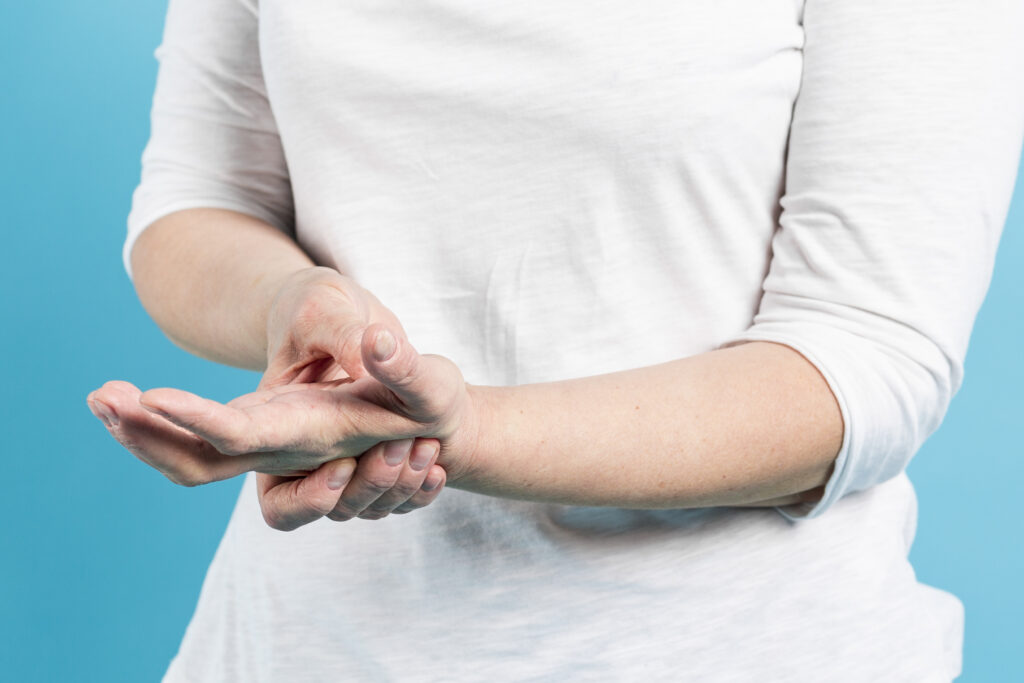When you find yourself battling a headache, it's easy to reach for over-the-counter medication, but have you considered natural alternatives? Some methods not only provide relief but also promote overall well-being. From the invigorating scent of peppermint oil to the calming effects of herbal teas, these approaches can be effective. You might even explore acupressure or the balance of heat and cold therapy. Each technique offers unique benefits, and you may be surprised at how simple adjustments can make a significant difference in your experience. What are the best methods to try first?
Peppermint Oil Application
Peppermint oil is a popular choice for natural headache relief thanks to its soothing properties. When you're dealing with a headache, applying peppermint oil can provide quick comfort. Its menthol content helps to relax muscles and improve circulation, which can alleviate tension and pain.
To use peppermint oil, start by diluting it with a carrier oil like coconut or jojoba oil. Mixing one or two drops of peppermint oil with a teaspoon of the carrier oil helps prevent skin irritation.
Once you've prepared the mixture, apply it to your temples and the back of your neck. Gently massage the area in circular motions; this not only distributes the oil but also enhances blood flow, contributing to relief.
Inhaling peppermint oil can also be beneficial. Add a few drops to a diffuser or simply inhale directly from the bottle. This aromatic experience can uplift your mood while easing headache discomfort.
If you prefer, you can mix peppermint oil into a warm bath. This method allows you to relax while the oil works its magic on your headache.
Acupressure Techniques
When you're seeking relief from a headache, acupressure techniques can be a powerful tool. This ancient practice involves applying pressure to specific points on your body, promoting relaxation and alleviating pain. You don't need any special equipment—just your fingers and a little bit of time.
Start by locating the LI4 point, also known as Hegu, which is situated between your thumb and index finger. Gently pinch the area with your opposite thumb and forefinger, applying firm pressure for about 30 seconds. You should feel a slight ache, but it shouldn't be painful. This technique can help relieve tension headaches and migraines.
Another effective point is the GB20, found at the base of your skull, just below the occipital bone. Use your thumbs to apply pressure here while tilting your head slightly back. Hold for at least 30 seconds. This technique may help reduce pain caused by stress and tension in the neck.
You can also try the Yin Tang point, located between your eyebrows. Applying gentle pressure here can help ease stress and promote mental clarity, which can be beneficial if your headache is stress-related.
Incorporate these acupressure techniques into your routine, especially when you feel a headache coming on. By being proactive and mindful, you can reduce the severity and frequency of headaches without relying solely on medication.
Herbal Tea Remedies
In addition to acupressure techniques, herbal tea remedies can provide soothing relief for headaches. When you brew a cup of herbal tea, you're not just enjoying a warm beverage; you're tapping into the healing properties of nature. Certain herbs are known to relieve headache symptoms effectively, making them a simple yet powerful tool in your natural remedy arsenal.
Peppermint tea is one of the most popular choices. Its menthol content can help relax muscles and improve blood flow, which may alleviate headache pain.
If you're dealing with tension headaches, chamomile tea might be your best bet. This gentle herb has calming properties that can reduce stress, leading to fewer headaches.
Ginger tea is another excellent option, particularly if your headache is accompanied by nausea. Ginger has anti-inflammatory properties that can lessen pain and discomfort.
For those who suffer from migraines, feverfew tea is worth trying. This herb has been used for centuries to prevent and treat migraines, providing relief from severe headaches.
Don't forget about the soothing effects of lavender tea. Known for its calming aroma, lavender can help reduce stress levels, promoting relaxation and headache relief.
To make the most of these herbal teas, steep them for at least five minutes to extract their full benefits. Add a bit of honey or lemon to enhance the flavor, and enjoy your cup of comfort while you take a moment to unwind.
You'll feel the tension melt away, giving you a natural alternative to over-the-counter medications.
Cold and Heat Therapy
Cold and heat therapy can be a game-changer for headache relief, providing immediate comfort and easing pain. When you apply a cold compress to your forehead or the back of your neck, it helps constrict blood vessels and reduce inflammation, which can alleviate the throbbing sensation of a headache. You can use a bag of frozen peas wrapped in a cloth or a cold gel pack. Just keep it on the affected area for about 15 to 20 minutes, and you'll notice a difference.
On the other hand, heat therapy works wonders for tension headaches. Applying a warm compress to your neck or shoulders can help relax tight muscles and improve blood flow, easing the discomfort. A warm towel or a heating pad can do the trick. Make sure it's warm, not too hot, to avoid burns. You can also take a warm shower or bath to soak your whole body in soothing heat.
It's essential to pay attention to your body's response. If cold feels better, stick with that; if heat provides more relief, go for it. You can even alternate between cold and heat therapy for a more thorough approach to pain relief.
Just remember to take breaks and listen to your body. Both methods are simple, effective ways to manage headaches naturally and can be easily integrated into your routine. So, give them a try and see which one works best for you!
Mindfulness and Relaxation
Many people find that incorporating mindfulness and relaxation techniques into their routine can considerably reduce headache frequency and intensity. These practices help you manage stress, which is often a significant trigger for headaches. By focusing your attention and calming your mind, you can create a more peaceful mental environment that fosters relief.
One effective technique is deep breathing. When you breathe deeply and slowly, you activate your body's relaxation response. Try inhaling for a count of four, holding for four, and exhaling for another four. Repeat this cycle several times to help alleviate tension and improve oxygen flow.
Meditation is another powerful tool. Even just a few minutes of quiet reflection can help center your thoughts. Find a comfortable position, close your eyes, and focus on your breath or a calming mantra. Allow your mind to drift away from the pain and distractions.
Progressive muscle relaxation (PMR) is also beneficial. Tense and then relax each muscle group in your body, starting from your toes and working your way up to your head. This technique helps release physical tension that can contribute to headaches.
Finally, consider incorporating mindfulness into your daily activities. Whether you're eating, walking, or simply sitting, try to stay present in the moment. Acknowledging and accepting your experiences can reduce anxiety and promote overall well-being, making headaches less likely to occur.
Conclusion
By trying these five natural headache relief methods, you can find what works best for you. Applying peppermint oil, practicing acupressure, sipping herbal teas, alternating cold and heat therapy, and incorporating mindfulness techniques can all help ease your discomfort. Remember, everyone's body responds differently, so don't hesitate to experiment with these approaches until you discover your perfect relief strategy. With a little patience and practice, you can take control of your headaches naturally.



